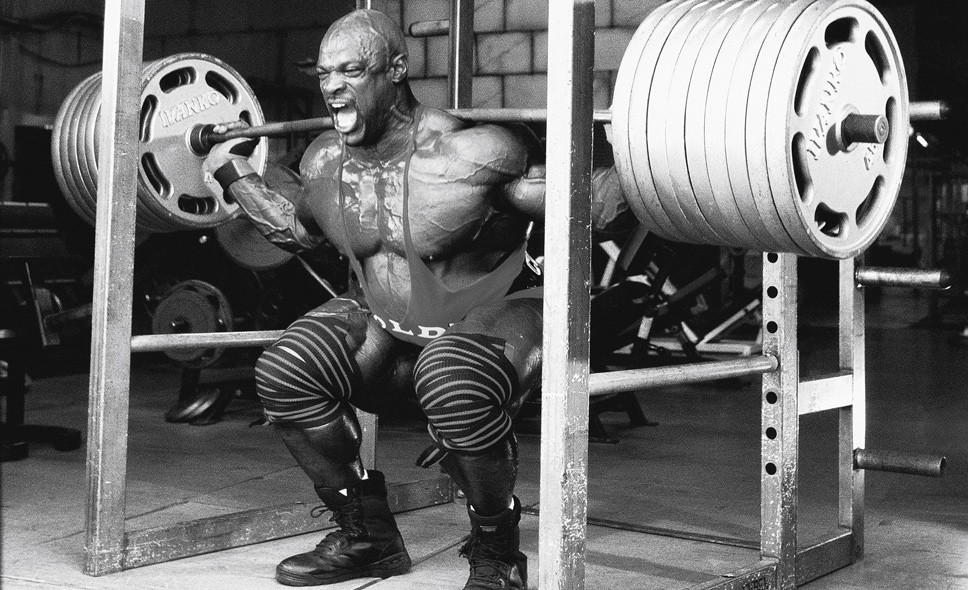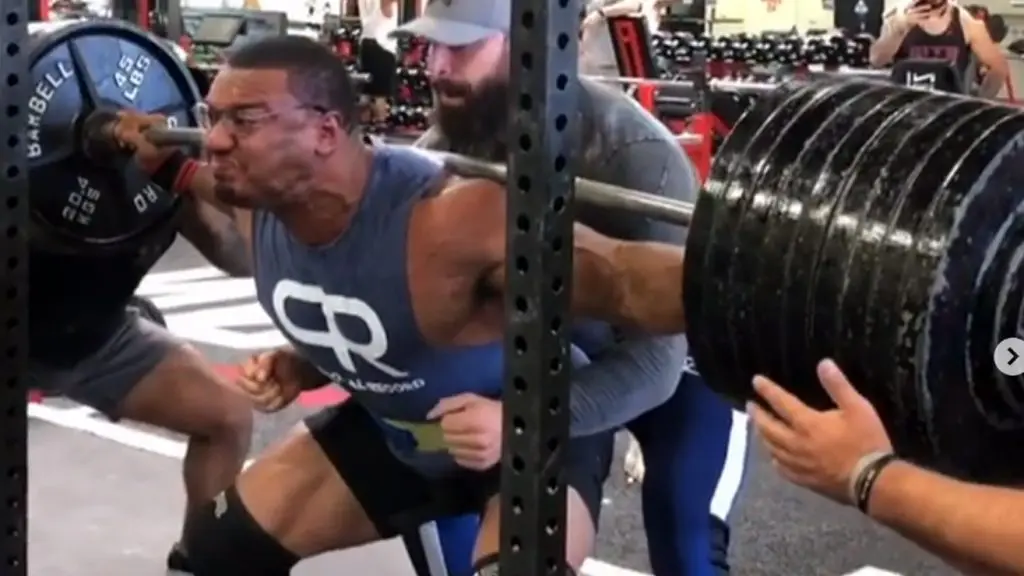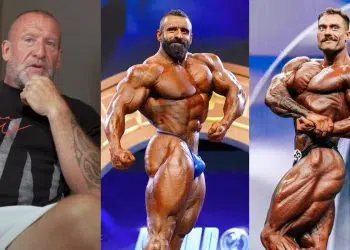Squats are often called the king of exercises and, whatever your fitness goal is, they should be part of your training. More than just an exercise, squats are also a common movement pattern. Getting out of a chair, standing up after crouching, or getting out of your car are all movements that involve squats. With very few exceptions, squats are good for everybody’s body.
Squats involve every major muscle in your lower body, including:
- Quadriceps – quads for short, these are the muscles on the front of your thigh, responsible for knee extension.
- Hamstrings – the muscles located on the back of your thigh, responsible for knee flexion and hip extension.
- Gluteus maximus – glutes for short, this is your main hip extender and also known as your butt.
- Adductor longus, brevis, and magus – the muscles on the inside of your thigh, responsible for drawing your thigh in toward the midline of your body.
- Gluteus minimus – one of the abductor muscles, responsible for moving your thigh out and away from the midline of your body.
- Erector spinae – the muscles that run up either side of your spinal column that are responsible for extension of your spine.
- Core – the collective term for the muscles of your midsection, including the rectus abdominus, obliques, and transverse abdominus. These muscles work together to stabilize your spine.
There are several different types of squat you can do, so you must choose the right one for your goals. In this article, we are going to explore two different ways to do barbell back squats; powerlifting style and bodybuilding style.
Powerlifting squats
Squats are the first event in most powerlifting competitions, and the aim is to lift as much weight as possible. In competition, powerlifters must squat down until their thighs are parallel to the floor. While it is okay to descend deeper than this, a shallow squat will not be counted, and three failures will result in disqualification. To squat the greatest weights possible, powerlifters lift and train in a very specific way.
Level Up Your Fitness: Join our 💪 strong community in Fitness Volt Newsletter. Get daily inspiration, expert-backed workouts, nutrition tips, the latest in strength sports, and the support you need to reach your goals. Subscribe for free!
- Reps– to get strong, powerlifters train mostly in the 1-5 repetition range. Such low reps are great for building strength but are less useful for building muscle. Powerlifters may do higher reps in the off-season, to provide their bodies with a break from the demands of heavy lifting. However, most of their training will be in the 1-5 rep range. This will probably involve a peaking cycle, where reps decrease, and weights increase in the lead up to a competition. For example:
6 weeks out – 5 sets of 5 reps
5 weeks out – 4 sets of 4 reps
4 weeks out – 3 sets of 3 reps
3 weeks out – 2 sets of 2 reps
1 week out – 1 set of 1 rep
Competition
- Weights – the aim of the powerlifting squat is to lower and then lift as much weight as possible. According to the rule of specificity, the best way to get stronger is by lifting heavy weights in training. Powerlifters typically train using 85%+ of their one-repetition maximum, or 1RM for short.
- Rest between sets– because powerlifters mostly lift heavy weights, rests between sets tend to be relatively long. This allows them to train with near maximal loads, building the highest level of strength in the process. 3 to 5-minute rests between sets are fairly standard, and some lifters will take as long as ten minutes between sets when working close to their maximum.
- Bar position– as the name suggests, the bar rests on the back in the barbell back squat. However, powerlifters tend to hold the bar quite low on their backs to shorten the distance the weight has to travel. This also takes stress off the lower back, and support the load over their hips rather than their knees.
The so-called low-bar squat allows powerlifters to use their glutes and hamstrings more and lift heavier weights. Low bar squats also mean that powerlifters can lean forward more easily, further increasing glute and hamstring recruitment.
Level Up Your Fitness: Join our 💪 strong community in Fitness Volt Newsletter. Get daily inspiration, expert-backed workouts, nutrition tips, the latest in strength sports, and the support you need to reach your goals. Subscribe for free!
- Foot placement– powerlifters typically squat using a wider-than shoulder-width stance. This spreads the load between more muscle groups, allowing more weight to be lifted. A wide stance also reduces the range of motion necessary to reach the proper depth. There is no “right” width stance; the best foot placement is the one that allows you to lift the most weight, but wider is usually better.
- Equipment– depending on the federation they compete in, powerlifters can use a range of performance-boosting equipment. Most lifters wear a supportive belt and knee sleeves or wraps, while some federations allow competitors to wear super-stiff “squat suits,” which provide extra support assistance.
Some federations are “raw,” which means they do not allow any equipment except a lifting belt. Powerlifters tend to train as they compete, so if they are lifting in a squat suit in competition, they’ll wear their squat suit during training too.
Bodybuilding squats

Bodybuilders use squats for muscle growth. In fact, many believe that squats are the best exercise for building leg muscle mass. Because of this, a lot of lower body bodybuilding workouts start with squats. Some studies suggest that doing squats will increase the production of testosterone and growth hormone, substances that are essential for muscle growth (1). To build maximum muscle mass, bodybuilders do squats in a very particular way.
- Reps– to increase muscle mass, bodybuilders mostly train in the 6-12 repetition range. This is considered to be the best range for creating muscle tension, microtrauma (muscle damage), and “the pump.” These factors are thought to be essential for muscle growth (2).
Bodybuilders will sometimes train outside of this range, for variety as well as to shock their muscles into renewed growth. Sets of 20 or more reps are quite common, and some bodybuilders will even use lower reps and heavier weights for short periods to increase their strength. However, the majority of their squats will be done in the 6-12 range.
- Weights– to train in the 6-12 rep range, bodybuilders use lighter weights than powerlifters. They mostly use 67-85% of their one-repetition maximum. This means that most sets of bodybuilding squats start out moderately easy and then get tougher towards the end. The last 1-2 reps of each set should be very hard, but you should still be able to complete your set in good form.
- Rest between sets – most bodybuilders only take short rests between sets of squats, limiting themselves to 30-90 seconds. This increases metabolic stress, lactic acid production, and also triggers an even greater muscle-building pump. A good pump, the term used to describe increased blood flow to the working muscle, is thought to be one of the factors responsible for muscle growth (3).
- Bar position – bodybuilders mostly squat to build bigger quadriceps. The hamstrings, glutes, etc. are still involved, but they are not the target muscle. To preferentially target the quads, bodybuilders rest the bar high on their upper backs – the so-called high bar position. This allows for a more upright torso and a more knee and quad-dominant movement.
- Foot placement– to place even more muscle-building stress on their quads, bodybuilders often squat with a narrow, hip-width stance. This increases quad recruitment and range of motion. Some also raise their heels on blocks, which increases quad activation even more. Wearing Olympic lifting shoes, which have a stable, elevated heel, has a similar effect. These adjustments lead to a much more upright torso, which keeps the stress off the glutes and hamstrings and puts it on the quads.
- Equipment– the last thing any bodybuilder wants to do is take stress off the muscles they are training. Things like squat suits and knee wraps do precisely that and offer no real benefit to bodybuilders. However, some bodybuilders use lifting belts and neoprene knee sleeves. While these items do provide support, they do not make squats any easier and do not take any stress off the target muscles.
Powerlifting vs. bodybuilding squats – which should you choose?
When deciding which type of squat is right for you, your decision should start with your training goal. If you want to develop big, muscular quadriceps, the bodybuilding squat is the best choice. The hip-width stance, combined with an upright torso and high bar position, maximizes muscle-building stress. Combined with sets of 6-12 reps using 67-85% of your 1RM, this is the ideal set up for hypertrophy.
However, if you want to test your strength, wide stance, low bar squats are best. Combined with low reps and heavyweights, this is the best way to get stronger.
Decide on your goal and then choose the best type of squat to achieve it. You can use the other method from time to time, but, for the best results, most of your training should match your main goal.
References:
1– Shaner, Aaron A.; Vingren, Jakob L.; Hatfield, Disa L.; Budnar, Ronald G. Jr; Duplanty, Anthony A.; Hill, David W. (2014-04). “The Acute Hormonal Response to Free Weight and Machine Weight Resistance Exercise”. The Journal of Strength & Conditioning Research. 28 (4): 1032. doi:10.1519/JSC.0000000000000317. ISSN 1064-8011.
2 & 3. Schoenfeld, Brad J. (2013-03). “Potential mechanisms for a role of metabolic stress in hypertrophic adaptations to resistance training”. Sports Medicine (Auckland, N.Z.). 43 (3): 179–194. doi:10.1007/s40279-013-0017-1. ISSN 1179-2035. PMID 23338987.
Also read:
- Powerbuilding Basics
- Bodybuilding vs. Powerlifting Deadlifts
- Powerlifting vs. Bodybuilding Bench Press
- Transitioning From Powerlifting To Bodybuilding
- Bodybuilding vs. CrossFit vs. Powerlifting
- Bodybuilding vs. Powerlifting Training












